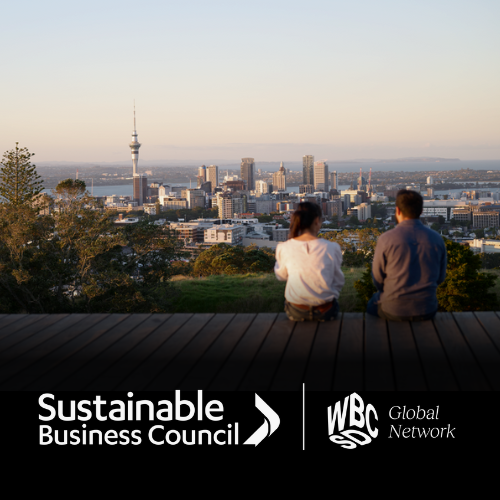Finding your place in the future
Integrated reporting is seen as a gold standard by many international and NZ business leaders. But while it’s been talked about for years, and there are many examples of good reports, businesses still ask us what it is and how it can help them.
Recently, I took part in New Zealand’s first Integrated Reporting practitioners training course, along with a group of people from SBC member organisations Proxima, Moana, Deloitte, Ravensdown and Toll Holdings.
And after two days of total immersion – learning the “what”, “how” and “why” of the Integrated Reporting framework – here’s what I’ve boiled it down to:
- Integrated thinking is where an organisation looks at the relationships between its different operating units, and the stocks and flows (the “capitals”) that each unit uses or affects.
- Integrated thinking provides a lens for businesses to look at what their business model is – how does it make money and what value does it create? It helps them think about how external factors, such as climate change, water scarcity and shifting consumer expectations, can impact a business’s inputs and the value it creates.
- Businesses that engage in integrated thinking understand that things like intellectual property, customer satisfaction and brand power have value in the long-term, far beyond the quarterly reporting cycle.
- An integrated report is a document that communicates in a concise way an organisation’s integrated thinking, and its ability to create value in the short, medium and long term. The course trainer, Felipe Arango, Managing Director of BSD Consulting, said, “Integrated thinking and integrated reporting are two sides of the same coin.”
- An integrated report will help an organisation justify why the company provides financial capital, and where, and connect its sustainability performance with its financial performance and competitiveness.
- Integrated reporting helps with reputation. That’s because in order to maintain the trust of your investors and stakeholders, you must tell a cohesive and balanced story about your business’s value that communicates where things haven’t worked, and challenges ahead, as well as what is working.
- This doesn’t have to be just for big companies – smaller businesses can still use the framework to define their business model, and what value they’re creating.
One of the course participants summed up why his organisation is applying the integrated reporting principles in this simple and resounding way: “We want to check that we’re not destroying value where we shouldn’t be, and creating value where it should be.”
This forward-thinking approach is what businesses need to do if they want to become more resilient in the face of massive global environmental and societal shifts. They need to review if their business model is viable for the long-term.
And if that place in the future is looking shaky, businesses that go through the integrated thinking and reporting process can better decide how they can adapt, and what their true value is – now, and in the future.
A big thank you to Proxima who ran the course and brought Felipe to NZ as the course trainer. And click here for an interview with Felipe Arango about blockchain‘s connection with sustainability, measuring natural capital, and financial inclusion
Contact:
Phone:
Email:

